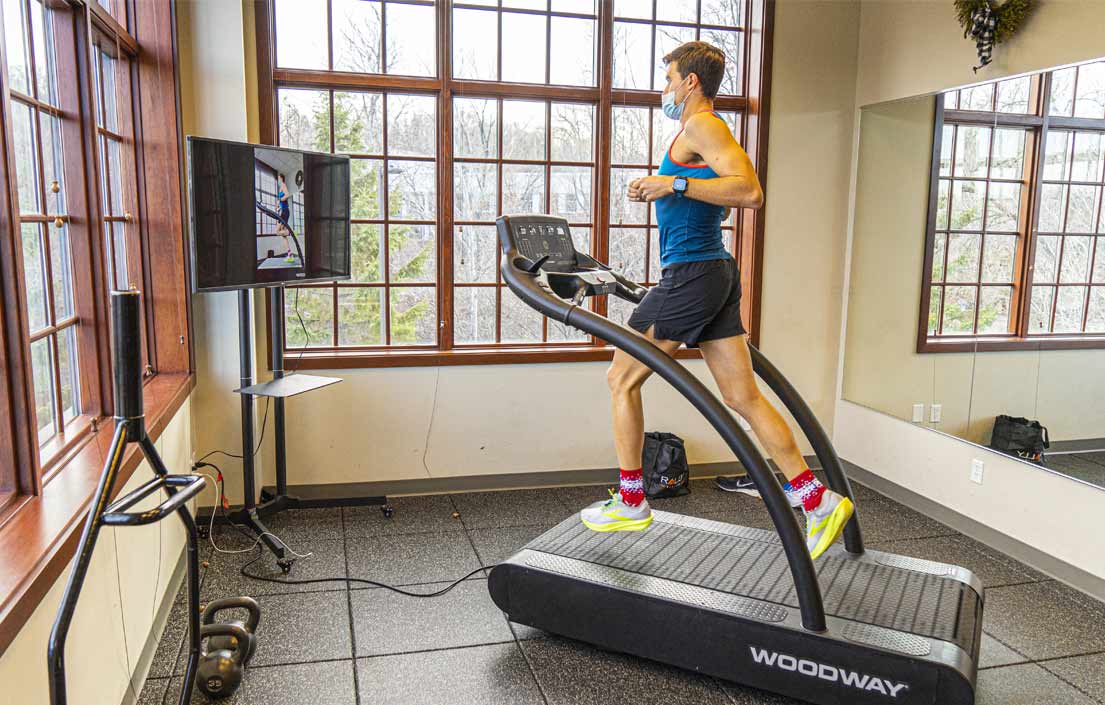Running Out the Pandemic: Finding Your Starting Line
April 5th, 2021
Article by: Andrew Moran, ODOM Health & Wellness

As running continues to be a large focal point for active populations, especially in surrounding cities, many of ODOM Health & Wellness’ clientele have taken to running as a way to stay healthy and build routine in what has been an inconsistent year.
With this influx of runners, we have those who are tapping into the sport for the first time as well as those who are upping mileage from years past. While there are many facets to becoming a runner beyond this post related to training volume, this post will outline some of the fundamentals that we help runners with that range from the professional level all the way down to the recreational runner to help them stay healthy and improve their running times.
The 3 areas we will focus on are Strength, Nutrition, and Running Gait.
Strength:
Strength training is a supplemental component of run training that can help to reduce injury risk and improve performance. One particular study indicated that developing additional load capacity in running specific muscle and tendon sites through heavy strength training can improve running economy by 5%. This has been correlated with improving the rate of force development and improving maximum aerobic speed during the running gait. By understanding the right form of strength work we can harness these benefits, build resilience, and improve performance. A simple starting point is to begin with double-legged lower body strength work to target running specific muscular sites like the lateral glute, hamstrings, quads, and calf muscle complex. Gradually progressing towards single leg strength work will help results to carry over into running due to the single leg nature of the sport. For more specific questions or customized programming, feel free to learn more on the ODOM Health training page.
Nutrition:
Nutrition is the oftentimes unseen piece of the puzzle that can make or break a runner’s ability to plug into health training and keep it sustainable. Finding a healthy balance of non-processed foods that don’t result in gastro-intestinal issues during running can be a challenge. A simple starting point for nutrition is having a balanced diet ensuring that you have enough carbohydrates, healthy fats, and protein to allow you to fuel for your activity and recover from it. While nutrition is not always as simple as getting enough nutrition, we find that this in itself can help to safeguard against running related injuries that steal fuel from our existing tissues such as muscle and bone. For those who are looking to sure-up their nutrition or if you are experiencing any gastrointestinal symptoms like bloating or upset stomach related to running, we recommend seeing a registered dietician to help you understand and plan your nutrition to compliment your training.
Running Gait:
Understanding the biomechanics that play into having a smooth and efficient running gait is an uphill battle to say the least. We’ve likely heard of different schools of thought for how we should run as time has progressed. As runners we often see it as being a rhythmic, consistent motion that should have a smoothness to it while also feeling good! Unfortunately if you have experienced an injury you have likely had periods where running contributed to discomfort or pain. We know that we have research validated assessment tools to help pinpoint potential causes of running related injury and lack of biomechanical efficiency.
At Odom Health and Wellness, our gait analysis uses our customized Woodway Treadmill as well as Runscribe to combine to get the most ground-like experience possible, while providing a wealth of details to pinpoint areas to learn more about. As much as we may want it to be true, to this point we have no documented literature that states that every runner should have a similar running pattern. That being said when you understand aspects of injury history, goals, training volume, ect, you are more able to piece together specific recommendations to allow for ideal running technique. When you know these variables, it opens the door for conversations around forefoot strike vs. rear foot strike, knee position, trunk lean, or arm carry. All of these factors can be explored further and simplified in a seamless way.
When in doubt, keep it simple, keep it smooth and if you are having issues ask for help from an expert. Having a running gait analysis performed from a Doctor of Physical Therapy can be complementary to an athlete who is looking to improve their running economy, or how much energy they expend during their running gait. Runners who are seeking to implement this tool to their approach are welcome to learn more about what running gait analysis entails and to see if it is a good fit for them.
